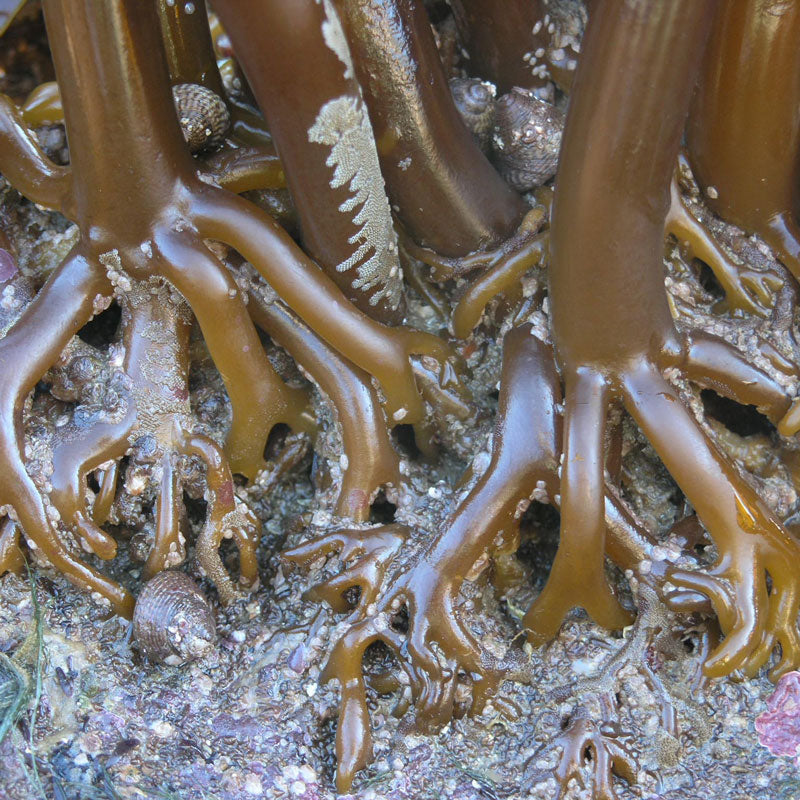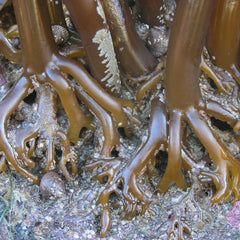

Kelp, Powder (Laminaria digitata)
- $14.00 CAD
- $14.00 CAD
- Unit price
- per
50g, 100g, 250g
Couldn't load pickup availability
Parts used: Entire plant
Properties
Alterative, antacid, antibiotic, demulcent, diuretic, hypotensive, mucilant, nutritive
Primary nutrients
Aluminum, barium, bismuth, boron, calcium, chlorine, chromium, cobalt, copper, gallium, iodine, iron, lithium, magnesium, manganese, nickel, phosphorus, potassium, silicon, silver, sodium, strontium, sulfur, tin, titanium, vanadium, vitamins A, B-complex, C, E, G, S and K, zinc, zirconium
Traditionally, kelp has been used for its rich abundance of iodine to treat thyroid disorders, whether underactive or overactive. It is a great promoter of glandular health and regulates metabolism. It has a reputation for increasing the rate at which calories are burned. Kelp is used to rid the body of toxins and radioactive material by preventing their absorption. It promotes the growth of healthy tissue, skin, hair and nails. It is also able to improve the cardiovascular system, nervous system, and mental alertness and alleviate kidney, bladder, prostate and uterine difficulties.
The ocean water contains one of the richest sources of the vital life-sustaining mineral elements known to science. Kelp extracts assimilate the mineral elements from the ocean water and converts them into a usable form for humans. This plant is thought to provide nourishment, enhance the immune system, aid in hormone balance and restore strength. Kelp has been proven to contain antibiotic properties. It is thought that the certain compounds in kelp are responsible for killing both gram-negative and gram-positive bacteria. Kelp has natural iodine to nourish the thyroid. Kelp helps increase energy through regulation of metabolism and may help reduce fat in the body. Kelp is full of nutrients to nourish the entire body. Kelp can also help prevent the absorption of some radioactive elements known to cause tumors, cancer and leukemia in adults and children.
Kelp contains nearly thirty minerals.
Primary Applications
Adrenal gland problems
Arteries, weak
Colitis
Complexion, unhealthy
Eczema
Energy, lack of
Fatigue
Goiter
Infection
Metabolism, slow
Nails, weak
Obesity
Pituitary problems
Pregnancy problems
Radiation, effects of
Skin, unhealthy
Thyroid problems
Secondary Applications
Acne
Anemia
Arthritis
Asthma
Blood pressure, high
Cancer
Diabetes
Gallbladder problems
Gas
Gastric disorders
Glandular problems
Headaches
Heart problems
Hypothyroidism
Indigestion
Kidney problems
Morning sickness
Nervous disorders
Pancreatic problems
Prostate problems
Tumors
Vitality, lack of
50g, 100g, 250g
RELATED PRODUCTS
- Choosing a selection results in a full page refresh.


